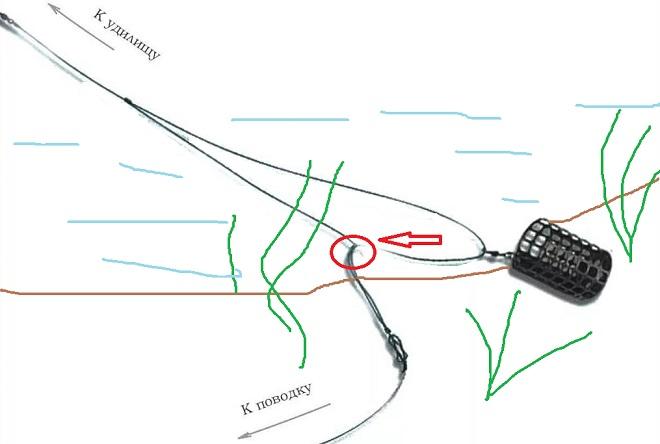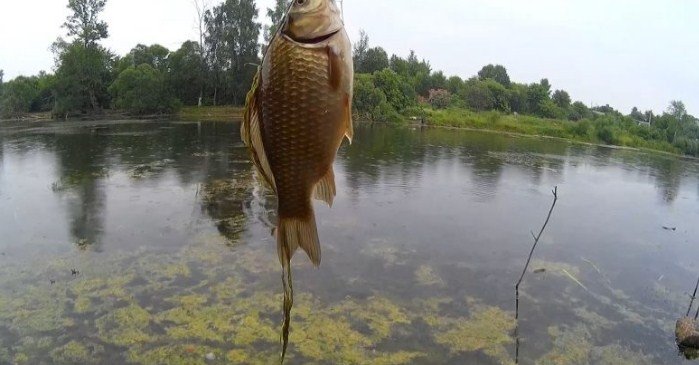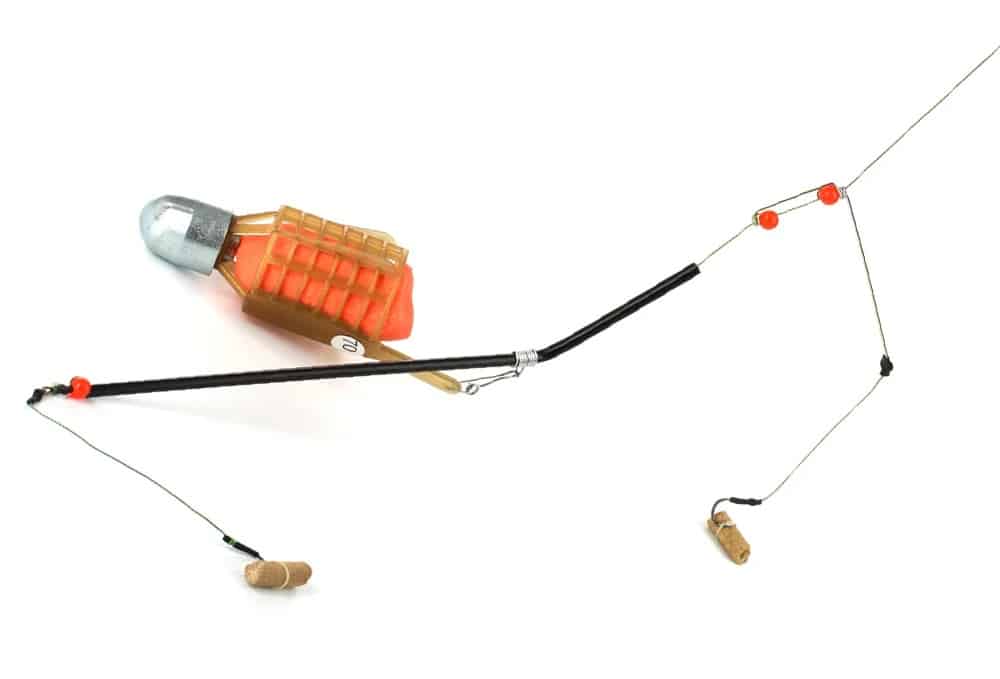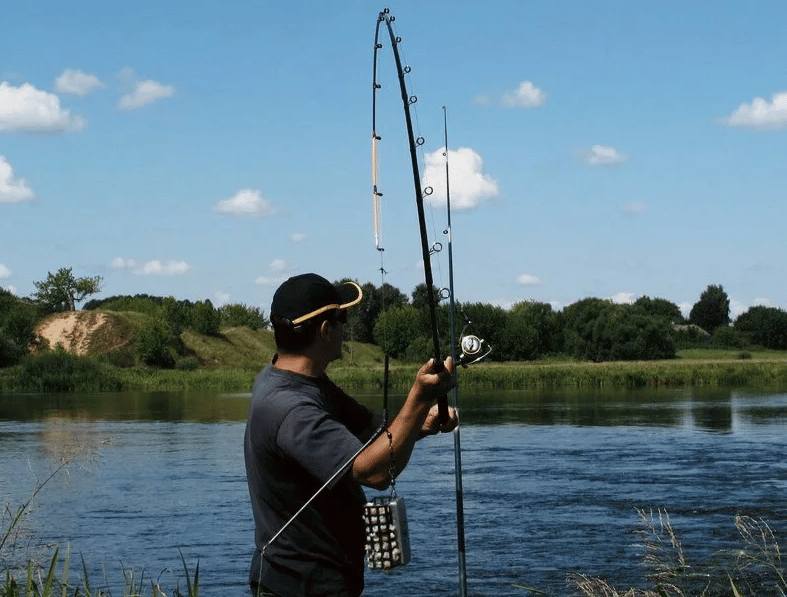Feeder tackle provides the fisherman with a good catch, but subject to skillful use of the tackle. The feeder requires from the fisherman not only tactical skills, concentration and correctly assembled tackle, catching even a very careful fish will ensure correctly selected and connected installations. One of the best flow installations is the asymmetrical feeder loop.
What is it – an asymmetrical loop
An asymmetric loop is a type of feeder rig. Due to its asymmetry, the leash, the loop itself, the feeder and the main line cannot get tangled. The fish does not feel the weight of the feeder. This makes it possible to catch even very cautious fish, including on the current. These advantages can only be used if the installation of the tackle is done correctly.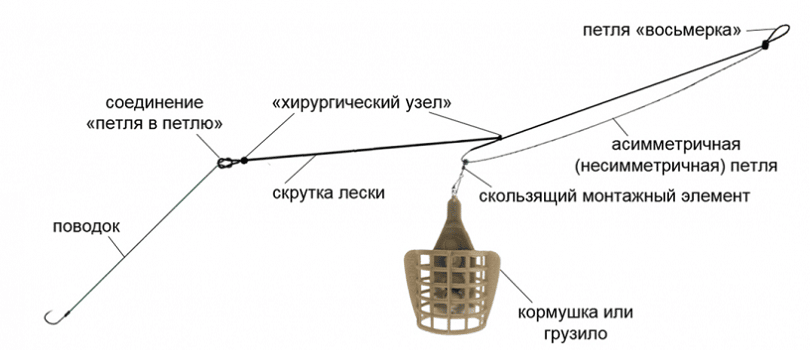
Pros and cons of unbalanced hinge mounting
When using an asymmetric feeder loop, you can take advantage of the following benefits:
- It is possible to use thin line and light feeders for catching passive fish.
- The use of an asymmetric feeder loop is universal: it is allowed to use a mono line or braid.
- The tackle is known for its high sensitivity. Even very careful bites can be easily spotted.
- You can fish in a strong current.
- The feeder and the leash do not get confused when casting or playing. This method of tying the loop takes the leash away from the line.
- The presence of a long leash prevents the fish from feeling the weight of the feeder.
The use of this option for equipping the feeder is associated with the following disadvantages:
- Editing looks complicated.
- During fishing, the fish will not self-catch. Because of this, constant monitoring of the tooling is required. If you are fishing at a considerable distance from the main camp, then there will be significant inconveniences.
- If mistakes are made during the installation, this will increase the risk of tangling the gear.
- This method of fishing in a silted or overgrown body of water can create significant difficulties.
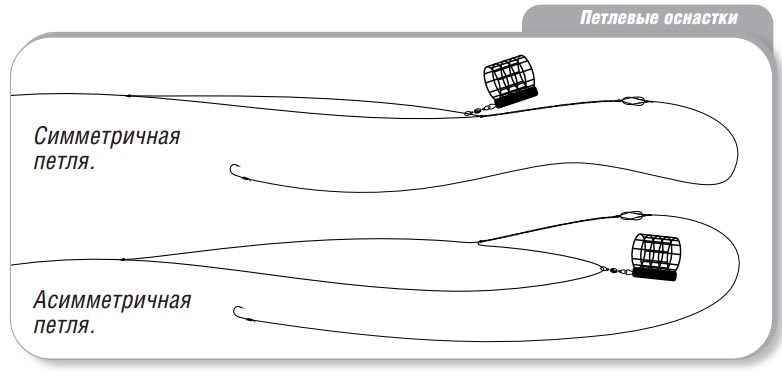
What is needed for installation
To install the tackle, you need to prepare everything you need:
- The main line and feeder are selected to suit the fishing purpose.
- You will need a feeder leader, thin line for insertion.
- This tackle requires a rigid line that holds its shape well.
- You will need a swivel with a fastener, an anti-twist.
It is recommended that you prepare this rig in advance. Due to its complexity, tying an asymmetric feeder loop while fishing can take a lot of time. For knitting, fluorocarbon fishing line with a thickness of 0.28-0.32 mm is used. If not, you can use a monofile. A thin line insert is needed to provide cushioning when fishing. Its length is 5-10 cm. This part should have tensile strength several times greater than that of the leash. Its thickness should be 0.12-0.16 mm. If you plan to catch trophy specimens, then you can take a leash with a thickness of 0.20 mm.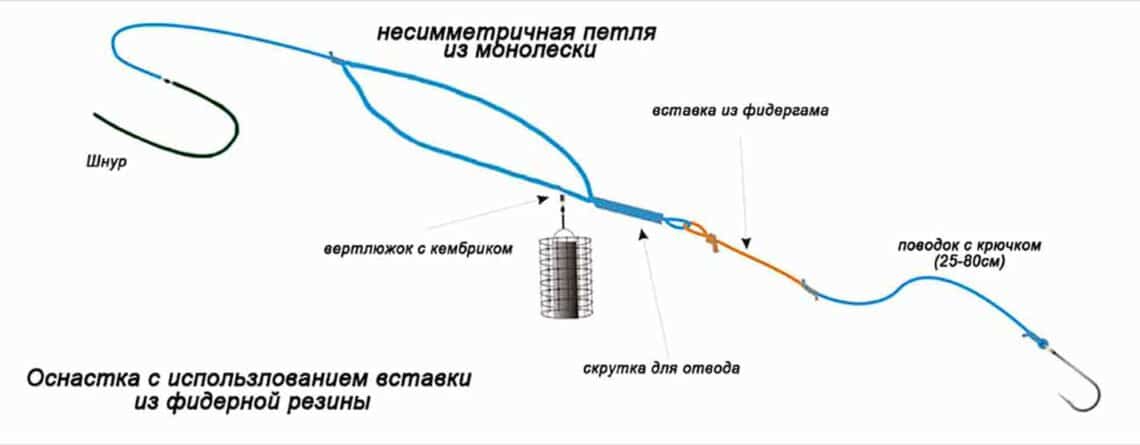
How to knit an asymmetrical loop: diagram and explanation
While this rig looks daunting, it can be learned by creating a rig at least a few times. It is important to perform every action exactly. Step-by-step instructions for creating gear looks like this:
- You need to prepare a piece of rigid fishing line 60-70 cm long. It needs to be folded in half. On the side of the fold, make a small loop designed to connect the leash. This loop should not be tightened or loosened. For it, use the ” figure eight ” knot .

- From the folded line leading to the loop you just created, you need to make a hard twist with a length of 10 cm. One way to do this is as follows. A finger is threaded into the loop. At a distance of 10 cm from the singing, the fishing lines are bred to the sides and fixed by holding with your hand. The loop into which the finger is threaded is unwound. In this case, the line begins to curl. You need to make a twist with a length of 10 cm.

- The end of the twist must be fixed. To do this, here they also knit an “eight” knot.
- A swivel with a fastener is put on one of the two free ends. A feeder is attached to it.
- The swivel is moved away from the twist by 1.5 cm.
- Now you need to take the feeder in one hand, and stretch the double line in the other direction. You need to count 15 cm and in this place tie the “eight” knot. Two loops limited the free movement of the trough.
- From the last knot there are two ends of the line. One of them needs to be cut off.
- On the second, you need to make a loop to attach to the main line. The fisherman must decide how far from the node it should be. Usually the distance is 10 cm or more.
- Now attach the leash to the loop intended for it. This completes the production of the tooling.

- You need to take a piece of fishing line and bend it in half. In this case, one end should be 10 cm smaller than the other.
- Make a small loop to which the leash will be attached.
- A twist is performed 10-15 cm long. At the end of it, a knot is tied. This stage of tackle creation is the most critical. The efficiency of the tackle significantly depends on its quality. The twist should be firm and tight.
- A swivel is put on the long end of the fishing line to attach the feeder.
- The ends are tied so that the swivel part is longer. In this case, they choose what size of the loop is needed.
- Attach a leash with a hook.
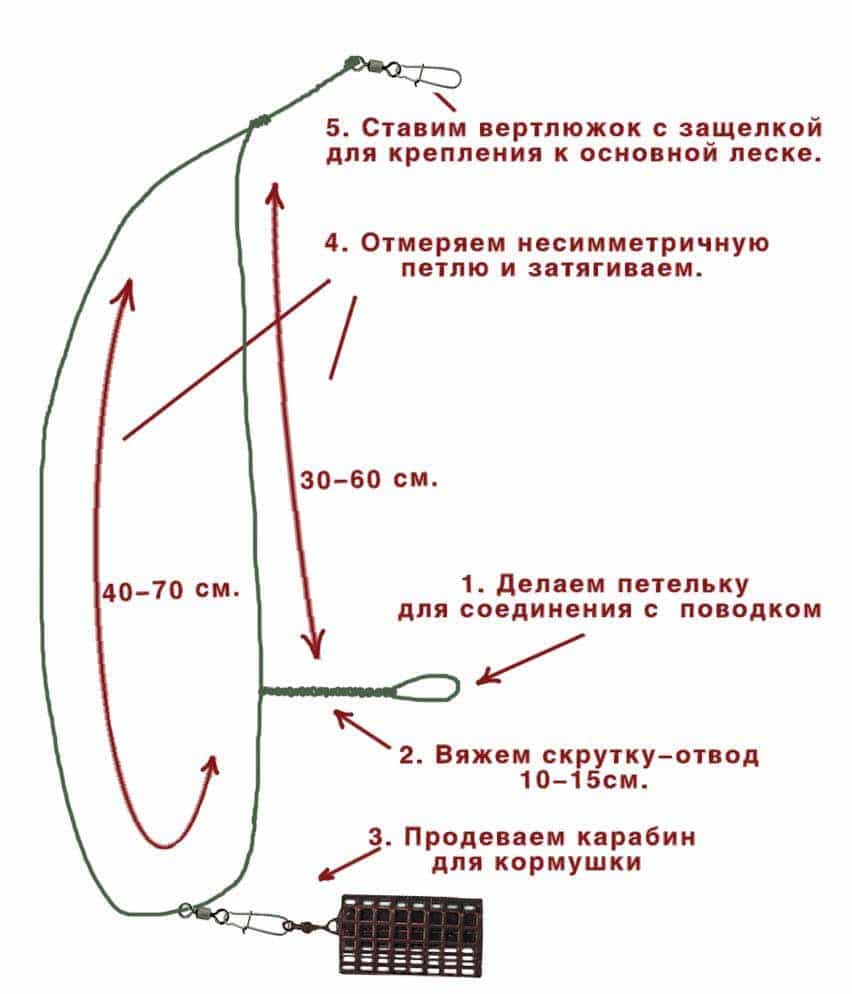
Features of fishing for such a montage
Fishing with an asymmetrical loop does not differ significantly compared to other types of feeder fishing. The main difficulty with this method of fishing is the need for constant monitoring. When biting, the fish is not detected. If this moment is missed, she can get off the hook. In order for the fishing to be effective, it is necessary to choose the right weight of the sinker. In this case, you need to be sure that the tackle will not be demolished. The length of the leash is selected in accordance with the characteristics of the fish. The best results can be obtained when fishing in calm waters, where there is no fast current or moderate current. This tackle is designed in such a way that it allows you to catch very cautious or well-fed fish, since it does not create resistance when biting. The tackle usually withstands no more than 3-4 fishing trips. Going to catchit is recommended to take with you several copies prepared for work.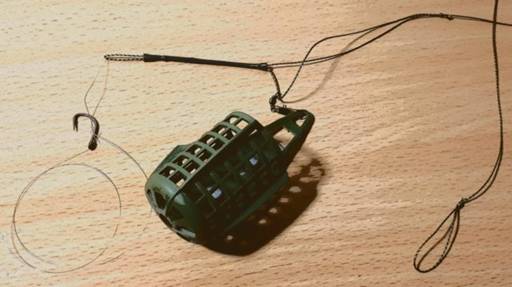
Tips to help knit an asymmetrical loop
There are a few tips to follow when creating this montage:
- Use a line that is highly resistant to chafing or cuts.
- The loop is made in such a way that the feeder can move freely along it. If this was not achieved, the tackle needs to be redone.
- Before you start creating the installation, you need to determine the rigidity of the line. This can be done by twisting it around your finger and releasing it. The soft one will fully or partially retain its shape, the hard one will immediately straighten.
- The length of the twist should be chosen depending on the fishing conditions. Usually it is 6-15 cm.
- In order to tie an asymmetric feeder loop, it is worth using a looper.
- The length of the loop is adjusted depending on the type of fish. For passive fish it is recommended to use a longer tackle.
- It must be remembered that the larger the loop, the less its sensitivity will be.
- The length of the leash depends on how actively the bite is going. The more passive it is, the longer it is recommended to use a leash.
- With regular use of the tackle, you need to monitor its condition. Sometimes the loop may fray. This must be detected in advance in order to be able to replace the spoiled one with serviceable tackle.
